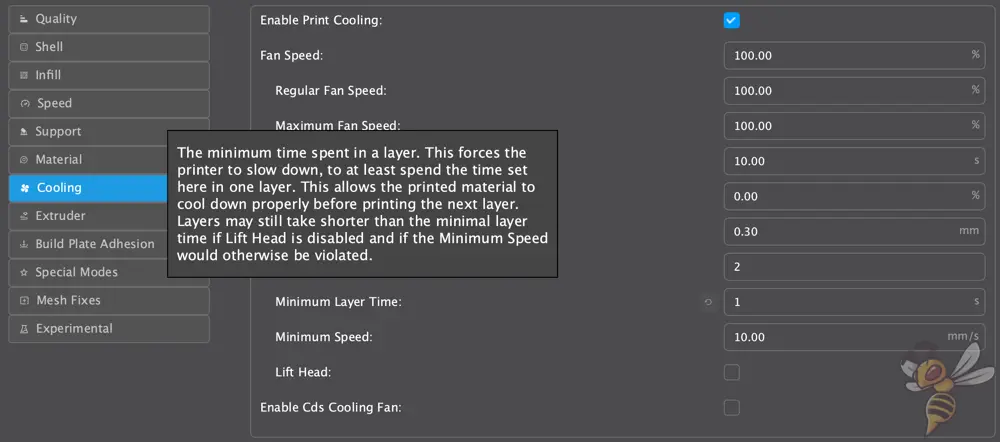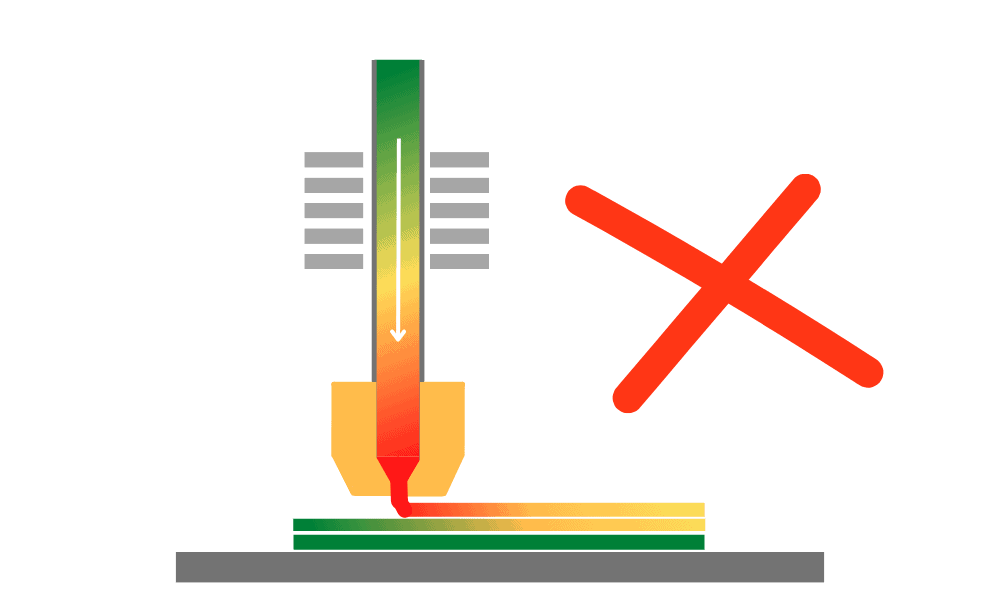- Wet Filament: Prevention, Symptoms & Drying - July 18, 2024
- Sovol SV08 – Best PrusaSlicer Settings & Profile - June 26, 2024
- Sovol SV08 – Best Orca Slicer Settings & Profile - June 26, 2024
Disclosure: Links marked with * are Affiliate Links. I earn from qualifying purchases if you decide to make a purchase through these links – at no additional cost for you!
Meanwhile, 3D printers like Creality’s K1 are so fast that some filaments can’t keep up. It can print at up to 600 mm/s – that’s twelve times faster than most Cartesian 3D printers.
Right after assembling the K1, I of course started the 600 mm/s test on the included USB stick with the Hyper PLA. My first thought was, “What, how can this be so fast?! Can you print this fast also with normal filament?!” – And that’s exactly what I wanted to try.
I did various tests with Hyper PLA from Creality* and normal PLA filament to answer this question. In this article, I’ll show you my test prints as examples and how to tweak the settings for regular filament to print as fast as possible with the K1.
Table of Contents:
What is Hyper PLA?
But what is Hyper PLA anyway and why is it so well suited for high speed printing?
There are two main properties that are important for this: the filament has to melt and cool quickly.
At high printing speeds, the extruder also has a high filament throughput. In order for the filament to then also be extruded flawlessly, it has to melt fast enough, for which it only has a short time.


Hyper PLA filament was designed by Creality to melt as quickly as possible in the hotend without clogging it. The filament only needs to spend a fraction of a second in the hotend to be sufficiently melted. Print defects caused by too low a print temperature because the filament was extruded too quickly cannot occur with Hyper PLA.

Very high print speeds are of no use if the minimum layer time cannot be reduced. In most slicers, this value indicates the minimum time a layer must take. If the 3D printer would theoretically be faster than this time, its speed will be reduced to meet this value.
So if you want to increase the print speed to 600 mm/s, you need to reduce the minimum layer duration (except for very large objects, of course, where a layer will take several seconds even despite the high speed).

However, with a short layer duration, there is a risk that the 3D printer prints on filament that has not yet completely solidified, which can lead to various printing errors. Therefore, the second important focus with Hyper PLA was that it also cools down and solidifies quickly.
This means that the minimum layer duration in the slicer can be greatly reduced. This is the only way you can print small objects like a 3DBenchy at high speeds.
Aside from being well suited for high speed printing, Hyper PLA also has higher tensile and flexural strength than ABS. The only downsides are that it’s only available in a few colors so far, and it’s a bit pricier than regular filament.
TIP: Learn how to calibrate your 3D printer to get perfect results every time in my 3D printing course: FDM 3D Printing: The Comprehensive Course from A to Z
(The course teaches everything you need to know for FDM 3D printing in over 60 lessons. The course will get beginners up to my level in no time!)
600 mm/s with Hyper PLA



With Hyper PLA, printing at a speed of 600 mm/s is no problem. I also printed the little boat pictured above within 12:52. The quality is not perfect, but it is good enough to rate the test as successful.
The settings in the slicer do not need to be adjusted for the Hyper PLA for high speeds. For example, the same printing temperature can be used.
600 mm/s with Normal PLA


With normal filament, however, it looks different. Here the settings have to be adjusted to the high speeds. Otherwise, strong printing errors will occur due to too low extrusion temperatures.
We don’t have to worry about fast cooling, at least with the K1 because the fan installed in the enclosure cools the layers extremely quickly. A minimum layer duration of one second is therefore absolutely no problem, even with normal filament.
To improve the print quality, I increased the print temperature to the maximum 300 °C so that the filament melts faster and reaches the actually desired print temperature of hopefully about 220 °C as soon as it exits the nozzle.
After that, I calibrated the retraction settings a bit more and printed the next test.

Although I could not reach the best time of Hyper PLA with normal PLA, a print time of 15:43 is also great!

At least the speed test at 600 mm/s I could print in the same time with normal filament. Print errors did not happen here either.
So it is possible to print with the K1 also with normal filament at 600 mm/s, but it is much more difficult to achieve a good print quality than with Hyper PLA.
Conclusion
With Hyper PLA, the Creality K1 also prints at 600 mm/s with a high print quality. With normal filament, the speed has to be reduced to 400 mm/s to achieve this quality. However, better values can be achieved with a precise calibration.
I used only Creality’s normal PLA in this test. It may be that you will get better or worse results with other PLA filament. It’s important to experiment with print settings to optimize print quality at high speeds.
In any case, with the K1 you can print several times faster than with most other modern 3D printers, even with normal filament!
Here you can find my detailed review of the K1: Creality K1 Review: A New Era of High-Speed 3D Printers?
Disclosure: This website is the property of Martin Lütkemeyer and is operated by Martin Lütkemeyer. Martin Lütkemeyer is a member of the Amazon Services LLC and other Affiliate Programs. These are affiliate advertising programs designed to enable websites to earn advertising revenue through advertising and linking to Amazon.com and others. Links marked with * are affiliate links.


